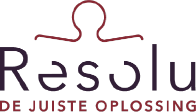get when they meet two conditions: 1) the employee has been sick for 2 years or more and can return to work (more) (in the future) and 2) with the work, the employee still earns 35-80% of the former salary.
From WGA to IVA
It is possible that someone is now between 80% and 100% incapacitated for work, but that in the future - within 5 years - the taxability increases. In this case, an employee falls under the WGA. If within 5 years the employee still becomes fully and permanently disabled for work due to the same cause, he or she may be eligible for the IVA.
5 tips to make your organization WGA-proof
As an employer, you are responsible for all employees in the event of illness - both permanent and flexible. This means it is important for you to actively think about smartly covering the risks. In practice, this is not always easy. That is why we are happy to help you on your way!
Tip 1. Make prevention a priority
When it comes to WGA expenses, the choice between UWV and private insurance is not the most important issue for employers. Preventing dropout should be priority number one. So you will have to get to work on prevention. Whether you have public or private insurance, the important thing is to keep your employees working. And if they do drop out, then reintegrate them as soon as possible. After all, the longer someone is out of the running, the more difficult and expensive it is to get them back to work.
Tip 2. Think about employability
In the Netherlands, the choice has been made to attribute damages for absenteeism to employers (for a maximum of 12 years). As an employer, you must therefore think about the employability of your employees. Not only preventively, but also during absenteeism. Consider investing in training and personal coaching. Employees thus remain in development and can adapt more easily to changing (work) conditions. In this way, you help your employees advance in their careers, even if it is outside your organization.
Tip 3. Take advantage of safety net arrangements
Check carefully whether a safety net or no-risk situation applies. Making use of these schemes not only saves on your absenteeism or sickness benefit costs, but also prevents (unnecessary) WGA costs for 10 years. Also read the white paper "Are you as an employer leaving unnecessary money lying around?".
Tip 4. (Re)consider funding choices.
Public and private are two different funding models. For many employers, (re)considering between the insurance options is difficult. Legislation and regulations often prove complex, so the advantages and disadvantages of both options are not always clear. One-to-one comparison of premiums therefore often leads to a wrong estimate of the actual costs. Avoid looking at WGA costs in isolation. From prevention at the front end to the WGA costs at the back end - it's all interrelated. Also consider what the causes are and how dropout can be prevented. Read the white paper 'Why become or remain self-insurer?
Tip 5. Take charge of a network
Ideally, the employer's organization is in a network that includes service providers who deal with prevention, sustainable employability, absenteeism and claims management on a daily basis. These organizations can advise you as an organization to minimize the claim burden.
Whitepapers & Webinars

WGA stands for: Return to Work Partially Disabled. This benefit is received by a ...
WGA stands for: Return to Work Partially Disabled. This benefit is received by a ...
You undoubtedly know; you are up to 12 years of financial ...




